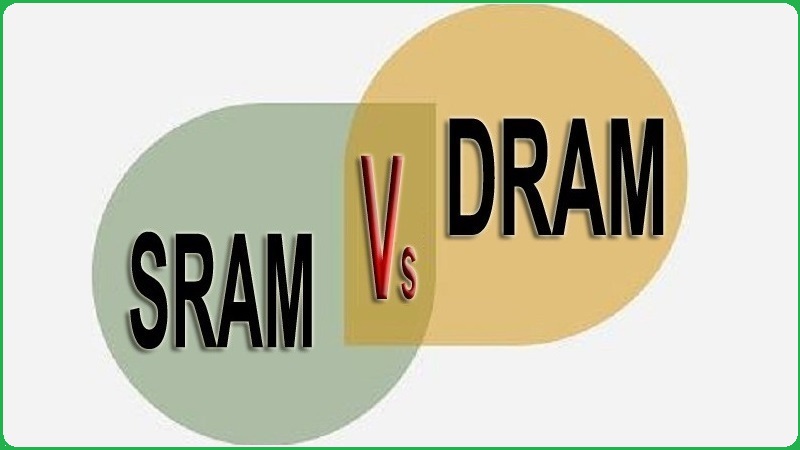Static RAM is able to retain all information into static form until power supply is turn off, so due to this nature this memory has name the volatile memory. Main objective of using the static RAM is to make Cache Memory. Static Ram is more expensive as well as its power consumption more than dynamic RAM.
Dynamic RAM is another type of semiconductor memory that designed specially to store data or program files which needed by computer processors for performing their functions.

In DRAM, several capacitors are using for storing every bit of data. This is very simple path to save data in its memory because it needs small area to store same data to SRAM as well as it is capable to store massive data than to SRAM but it requires the frequently refreshing of its circuit for its charging, so it consumes more power compare to SRAM.
Difference between SRAM and DRAM
In this section, we will do differentiate between SRAM and DRAM as well as compare static and dynamic RAM in tabular form.
SRAM (Static Random Access Memory)
More expensive
It has excellent speed to DRAM.
Use in L1 and L2 Caches Memory.
High density, it means six transistors per chip.
Volatile Memory – Do not need extra charges for storing data.
It is placed between main memory and processor.
Linked directly to Cache Memory
Small size
Use transistors and latches.
It uses six transistors in one block memory.
Do not need refreshing circuit.
Consume less power to DRAM.
SRAM is on chip memory, it needs small access time.
DRAM (Dynamic Random Access Memory)
Less expensive
It has slow speed to SRAM
Use in Main Memory.
It uses low density per cell; it means one transistor per chip.
Volatile Memory – need regular power supply to store data
This embeds on the motherboard of PC.
It is attached directly with CPU bus.
Large size
Use capacitors.
It uses one transistor in one block memory.
Need power refreshing circuit
Consume high power.
DRAM is off chip memory that means, it needs large access time.
Key Differences RAM Vs DRAM
- Static RAM is inbuilt chip memory whose gets to access time is small in size, whereas Dynamic RAM is an off-chip memory, and it has a enlarge access time. So SRAM’s speed is getting fastest compare to DRAM.
- DRAM is presented in massive storage capacity, whereas SRAM has small size of storage capacity.
- SRAM is more costly, but DRAM is less expensive.
- SRAM is also using in the cache memory, whereas DRAM is used in the main memory.
- SRAM contains small dense, whereas DRAM contains higher dense.
- SRAM’s design is more complex because it uses many numbers of transistors, whereas DRAM has simple design.
- Due to single block of memory, SRAM needs six transistors but DRAM requires only one transistor for single block of memory.
- SRAM has no any charge leakage, but DRAM uses capacitor which produces leakage current due to the dielectric used inside the capacitor to separate the conductive plates is not a perfect insulator hence require power refresh circuitry.
- SRAM works based on the principle of changing the flow of current to direction through switches, so it consumes less power. But, DRAM operates on holding the charges, so it consumes more power than SRAM.



